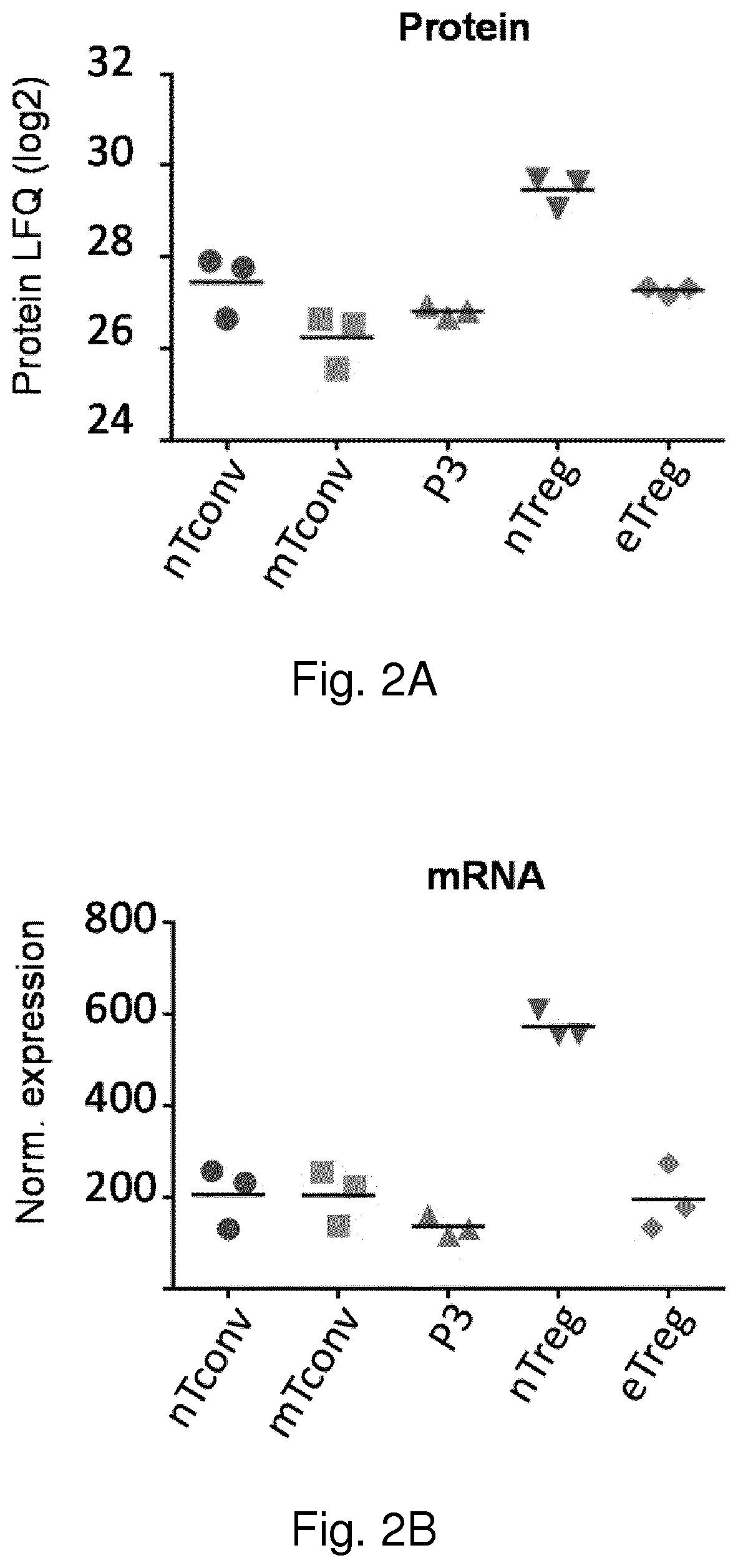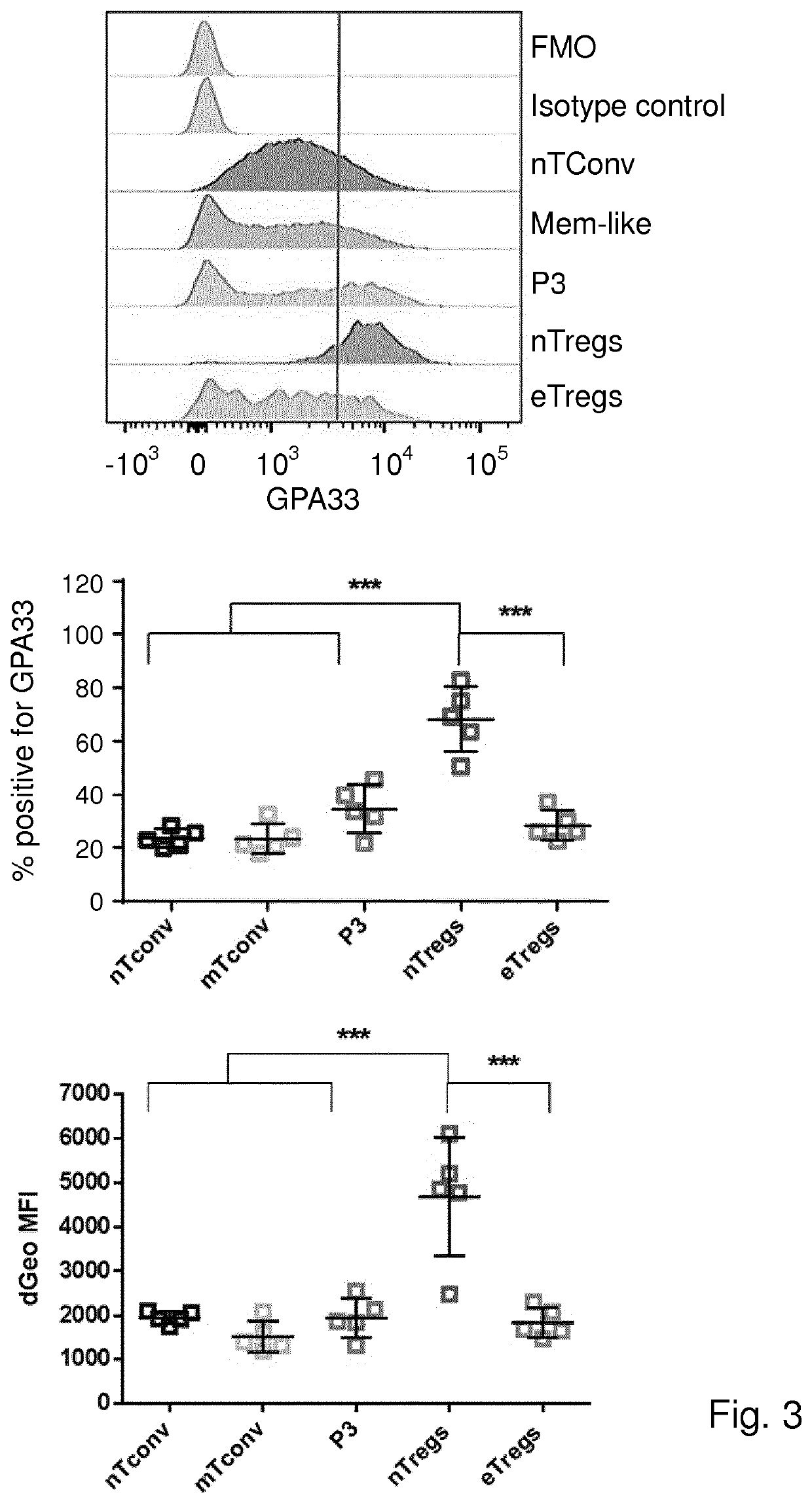Isolation of stable regulatory t cells and uses thereof
a technology of stable regulatory t cells and t cells, which is applied in the field of can solve the problems of no markers that allow discrimination, inclusion of contaminating conventional cd4sup>+/sup> t cells, and instability of peripherally induced t cells (itregs) to achieve stable regulatory t cell populations
- Summary
- Abstract
- Description
- Claims
- Application Information
AI Technical Summary
Benefits of technology
Problems solved by technology
Method used
Image
Examples
examples
[0172]Materials and Methods
[0173]Cell Isolation and Cell Sorting
[0174]Human peripheral blood mononuclear cells (PBMCs) were obtained from fresh buffy coats from healthy male donors using Ficoll-Paque Plus (GE Healthcare) gradient centrifugation. Total CD4+ T cells were isolated using magnetic sorting with CD4 microbeads (Miltenyi Biotec) and then viable cells were separated using flow-cytometric sorting for CD25 (43839, BD), CD127 (351309, Biolegend) and CD45RA (560675, BD) on a FACS Aria III (BD Biosciences). Blood samples were obtained from anonymized volunteers with written informed consent used in accordance to guidelines established by the Medical Ethical Committee.
[0175]Flow Cytometry
[0176]Cells were labeled with fluorochrome-conjugated antibodies in PBS 0.5% BSA for 30 min at 4° C. For intracellular and nuclear staining, cells were fixed and permeabilized using Foxp3 / Transcription Factor Fixation / Permeabilization buffers (eBioscience) according to the manufacturer's instructi...
PUM
| Property | Measurement | Unit |
|---|---|---|
| selective pressure | aaaaa | aaaaa |
| cell surface | aaaaa | aaaaa |
| fluorescence activated cell sorting | aaaaa | aaaaa |
Abstract
Description
Claims
Application Information
 Login to View More
Login to View More - R&D
- Intellectual Property
- Life Sciences
- Materials
- Tech Scout
- Unparalleled Data Quality
- Higher Quality Content
- 60% Fewer Hallucinations
Browse by: Latest US Patents, China's latest patents, Technical Efficacy Thesaurus, Application Domain, Technology Topic, Popular Technical Reports.
© 2025 PatSnap. All rights reserved.Legal|Privacy policy|Modern Slavery Act Transparency Statement|Sitemap|About US| Contact US: help@patsnap.com



